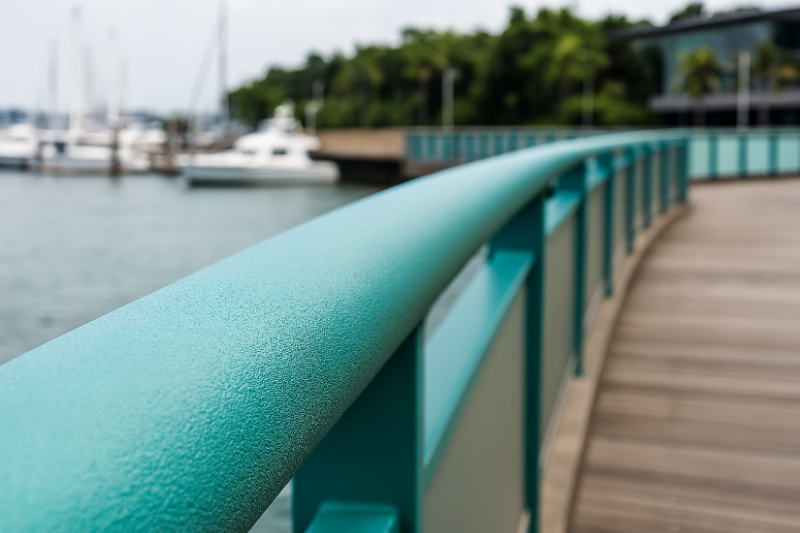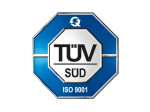Can You Paint Over Anodized Aluminum?
Yes. You can paint over anodized aluminum if you prepare it properly, clean off oils and salts, lightly abrade or micro-etch to create a key, prime with an aluminum-appropriate primer (epoxy or self-etching), then apply a durable topcoat (2K polyurethane or epoxy). Allow full cure for lasting adhesion.

Why Paint Anodized Aluminum? Key Reasons
Anodized parts (window frames, façade trims, handrails, signage) are tough, but years of UV, salt air, and cleaning chemicals can fade or stain them. Painting restores colour, protects against corrosion, and aligns finishes across renovated spaces without replacing the metal.
Refresh Faded or Mismatched Finishes
UV and sea air can dull anodized surfaces over time. Painting restores colour consistency across window frames, façade trims, handrails, and signage, especially on mixed-age buildings.
Extend Service Life Without Replacement
A modern coating system (clean, key, prime, polyurethane) adds a protective barrier against corrosion and wear. You keep the existing metal and avoid invasive replacement works.
Align Colours During Renovations
Renovations often introduce new palettes. Paint lets you match brand or architectural colours precisely on existing anodized parts, ideal for retail rebrands and lobby upgrades.
Improve Chemical and Abrasion Resistance
High-touch or frequently cleaned areas (marina railings, lift lobbies) benefit from epoxy and polyurethane systems that resist cleaning agents, hand oils, and scuffs.
Reduce Cost and Downtime
Repainting typically costs less and finishes faster than fabricating and installing new extrusions. You minimise tenant disruption and scaffold time.
Support Sustainability Goals
Keeping the original aluminum cuts waste and embodied carbon from new metal production. A recoating plan fits green-retrofit strategies and ESG reporting.
Fix Localised Damage Cleanly
Painting blends repairs for scratches, tea-staining, or patchy anodize without visible panel swaps. Spot-priming and feathering deliver a uniform look.
Enhance Aesthetics and Texture Options
Coatings offer matte, satin, or fine-texture finishes that hide minor defects and modernise older frames—useful in premium residential and hotel upgrades.
Add Functional Properties
Specialty topcoats can add anti-graffiti, anti-microbial, or low-VOC indoor performance where needed (e.g., healthcare or food areas).
Adapt to Singapore Conditions
Formulate for humidity, salt exposure, and intense UV. Correct prep and a UV-stable polyurethane help coatings last on coastal façades and open-air walkways.
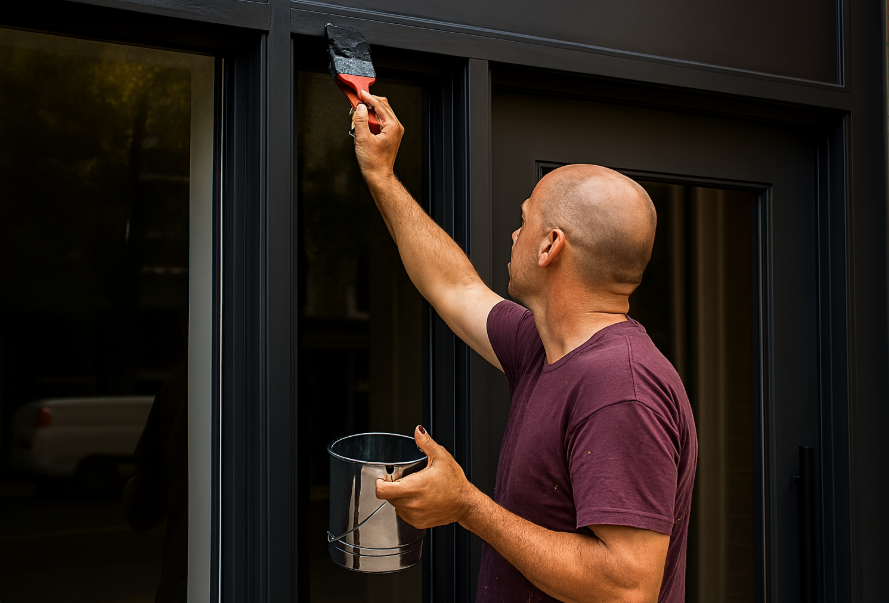
How Anodizing Affects Paint Adhesion
Anodizing forms a hard, sealed oxide layer that’s smooth and low-energy, so fresh paint won’t grip without preparation. Clean and degrease thoroughly to remove salts, oils, and silicone; then lightly scuff or micro-etch to open the surface and create tooth.
Prime with an aluminum-appropriate system, epoxy for universal adhesion and corrosion resistance, or self-etching for small parts then finish with a durable topcoat (2K polyurethane outdoors for UV and humidity, epoxy indoors for wear and chemicals).
You’re ready to coat when water sheets rather than beads, the surface looks evenly dulled, and a small test patch passes a tape pull.
In Singapore’s coastal conditions, add an extra freshwater rinse before prep and choose UV-stable polyurethane to maximise longevity.
Step by Step to Paint Anodized Aluminum
Prep is everything. Follow this sequence to turn a slick, sealed anodized surface into a paint-ready substrate that holds up in Singapore’s heat, humidity, and sea air. Keep coats thin, respect recoat windows, and don’t skip cleaning, most failures start with contamination, not the paint.
- Inspect & mask. Check for chalking, scratches, tea-staining, and silicone residue; mask glass, gaskets, and adjacent finishes.
- Rinse off salts. For outdoor or coastal items, hose with fresh water to remove surface salts; let dry.
- Wash & degrease. Clean with a pH-neutral wash, then wipe with a suitable degreaser or isopropyl alcohol; dry lint-free.
- Create a key. Lightly scuff with a fine non-woven abrasive (uniform dull finish) or apply an approved micro-etch/metal conditioner per TDS.
- Dust off. Vacuum or tack-rag the surface to remove fines; avoid touching with bare hands.
- Prime for aluminium. Spray a thin, even coat of epoxy primer (preferred) or self-etching primer for small parts; respect film build and recoat window.
- Topcoat. Apply 2–3 light coats of 2K polyurethane for exterior UV/humidity, or 2K epoxy for high-wear interiors; allow flash between coats.
- Cure fully. Let the system cure to the manufacturer’s schedule before handling or weather exposure.
- Quality check. Do a small cross-hatch tape test on a masked patch; confirm no flaking.
- Maintain. Clean with mild, pH-neutral detergents; rinse salt periodically in coastal sites and touch up chips promptly.
Wear eye, skin, and respiratory protection to ensure ventilation, and follow each product’s TDS/SDS.
Do You Need to Strip the Anodizing?
Usually no. If the anodized layer is sound, proper cleaning, keying, and priming are enough. Strip only when the surface is severely damaged, contaminated with silicone, or previously coated with failing paint that won’t feather cleanly.
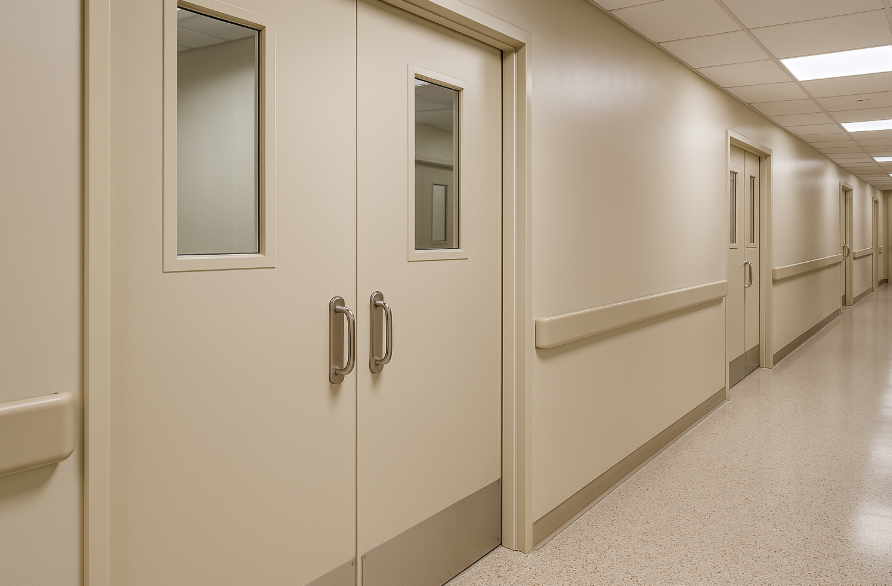
Real Examples
East Coast Condo – Weathered Window Frames
In an East Coast condo, weathered bronze anodized window frames showed light tea-staining from sea air. We rinsed with fresh water, degreased, and created a uniform mechanical key with a fine non-woven pad. Selected areas received a non-chrome conversion pretreatment, followed by an epoxy primer and a satin 2K polyurethane topcoat. The finish achieved uniform colour, clean gasket lines, and passed a cross-hatch tape test after cure, with no chalking at a 12-month inspection.
Sentosa Marina Boardwalk – Handrails & Wayfinding
Along the Sentosa marina boardwalk, handrails and wayfinding panels suffered from sunscreen residue, salt deposits, and frequent cleaning. After removing salts and washing with a neutral detergent, we wiped down with IPA and performed a controlled fine blast on high-wear rail tops. An epoxy primer and semi-gloss polyurethane completed the system, improving cleanability and resisting neutral cleaners while a fine-texture finish maintained grip and appearance.
Hospital Back-of-House Doors & Trims
At a hospital back-of-house corridor, aluminium doors and trims dulled under regular disinfection cycles. We degreased thoroughly, used a wipe-on micro-etch conditioner with rinse, and applied an epoxy primer followed by a chemical-resistant polyurethane, sealing exposed cut edges. The new finish tolerated disinfectants, cleaned easily, and allowed quick touch-ups to prevent underfilm corrosion.
Retail Façade Refresh – Brand Recolour on Existing Frames
For a retail façade refresh, the brand update required deep charcoal across mixed-age anodized mullions. We established a consistent mechanical key, corrected minor dents with spot putty, and applied an epoxy primer before a low-gloss 2K polyurethane. The satin sheen reduced reflections and concealed minor waviness, producing a clean, uniform look over a weekend turnaround with minimal trading disruption.
If you’re comparing substrates for façade work, it helps to understand common aluminium alloys used in Singapore fabrication.
For ventilation or decorative infills, expanded metal’s features and applications offer airflow and impact resistance while keeping a clean look.
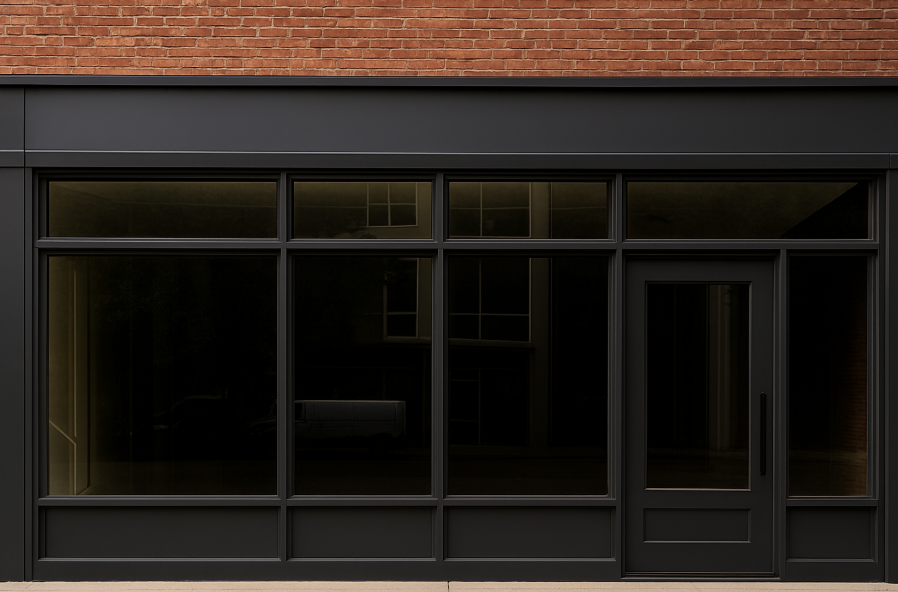
Mistakes That Cause Peeling
Peeling happens when paint can’t anchor to the anodized layer or loses its bond over time. The usual culprits are a slick, contaminated surface, the wrong primer, or rushed application that prevents proper crosslinking and cure, especially under Singapore’s heat, humidity, and salt exposure.
- Painting over oils, silicones, or salt residue.
- Skipping abrasion/etch paint won’t grip a slick, sealed surface.
- Using the wrong primer (e.g., timber or generic acrylic primers).
- Rushing recoat and cure times.
Maintenance After Painting
Keep the coating clean, dry, and lightly protected so it stays bonded and glossy in Singapore’s heat and sea air. Rinse salt, wash gently, fix chips fast, and avoid harsh chemicals that soften the film.
- Rinse salt monthly (coastal/exposed areas). Hose with fresh water and let it drain. This prevents underfilm corrosion.
- Wash every 2–3 months. Use pH-neutral soap, soft sponge or microfiber, and plenty of water. Rinse well and dry to avoid water marks.
- Avoid harsh products. Skip strong alkalis, acidic cleaners, bleach, abrasive pads, and solvent wipes. They dull or soften polyurethane.
Mind hardware and sealants. Use paint-safe lubricants on hinges; choose neutral-cure sealants that won’t attack the coating.
After storms or NE monsoon spray, do an extra freshwater rinse the same week. Fast salt removal is the single biggest life extender for coated anodized aluminium.
Mixed-material sites last longer when you match each metal to its environment, start with the basics of aluminium alloys for local fabrication and stainless 304 vs 316 before you choose coatings.
Conclusion
Painting over anodized aluminium works when you treat prep as a process, not a shortcut. Clean thoroughly, create a consistent key, prime with an aluminium-ready system, and finish with a durable topcoat that suits Singapore’s heat, humidity, and sea air.
If your scope goes beyond repainting, The Monster Builder can take you further with aluminium sheet fabrication from custom panels and trims to brackets and signage so you can refresh existing anodized frames and fabricate matching new components under one roof.
If repainting is part of a wider retrofit, pair coatings with smart metal choices from galvanised steel behind the scenes to laser-cut aluminium on show so the whole system works in Singapore’s climate.
Talk to us about a site assessment, a paint specification that fits your environment, and precision-made aluminium parts that arrive ready to install.

